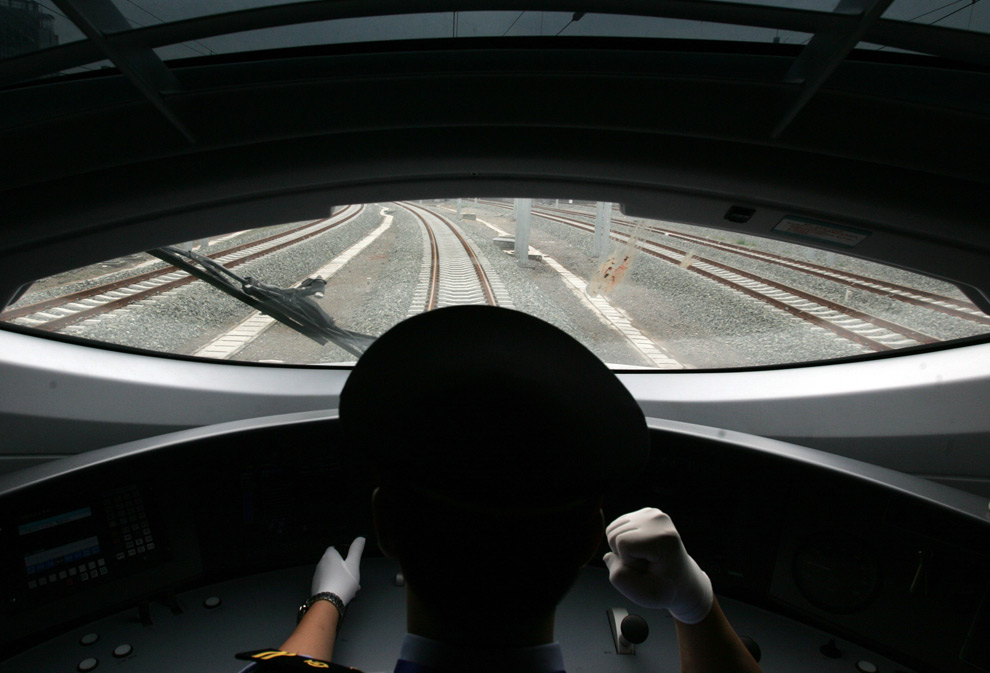What we have here is a photograph shot from inside the new, “bullet train” that will begin running on the high speed Beijing-Tianjin express railway starting on August 1, 2008, just in time to accommodate the high traffic of foreigners who will be attending the 2008 Summer Olympics. It runs at a speed record 394.3 kmh, thus traversing the 135 km from Beijing to the port city of Tianjin in less than 30 minutes and representing the height of modern urban mass transportation technology. The photograph puts the viewer just behind the driver, and thus aligned with both the technology and, perhaps not so incidentally, efficient and effective modern state control of the world in front of it.
What struck me most about the image is how it operates both in tandem and in tension with the now famous photograph of the lone protestor stopping the tank near Tiananmen Square in 1989. On the one hand, it shares all of the aesthetic conventions of high modernism that we find in the iconic image of the man and the tank. The orientation is universal rather than parochial, geometric rather than organic, functional rather than customary, and so on. This aesthetic—what anthropologist James C. Scott calls “seeing like a state”— is reinforced by the tonality of the image which, while in color, nevertheless veers towards the grey scale of the photographic spectrum and thus gestures towards the abstract and schematic orientation of much scientific representation.
On the other hand, there is something of a reversal of perspective. In the original Tiananmen Square photograph the viewer is an outsider looking in on another culture from a safe distance—and in this context it is important to note that as famous as the 1989 photograph is in the western world for its manifestation of an heroic, liberal individualism, it has very little recognition and resonance within China itself—whereas here the outside viewer is invited to share the panoptic vision of the modern state from the inside. And note how that view is circumscribed by the window that narrowly restricts any peripheral vision, creating something of a tunnel vision effect that enables us to see no more than how clean the tracks ahead are, how totally devoid they are of anything that might derail the train from its appointed task of moving passengers from here to there quickly and efficiently. In short, we can only see what the apparatus—state, technological, what have you— enables us to see. And, of course, this can be a problem when you are on the inside looking out, whether as the driver or as an unwitting passenger.
The question then is, what are we missing in the process? If there were a lone individual standing on the tracks trying to stop the train he or she couldn’t be seen—and at this speed perhaps all that would remain is that reddish-brown smudge on the windshield. Then again, protestors—individuals or otherwise—are not likely to stand in the way of this train as they have been relegated to “Olympic Protest Zones” in designated parks, and at that it is unlikely that most dissidents will successfully negotiate the bureaucratic barriers to political protest that include applying for a permit in person, five days in advance of a demonstration, and with detailed information such as the slogans to be used, the number of demonstrators, and so on. Maybe that is what we miss when we look only from the inside out.
Photo Credit: STRA/AFP Getty Images and The Big Picture

[…] iterations and appropations see our chapter in No Caption Needed (the book) and posts here and here.) Share and Enjoy: These icons link to social bookmarking sites where readers can share and […]